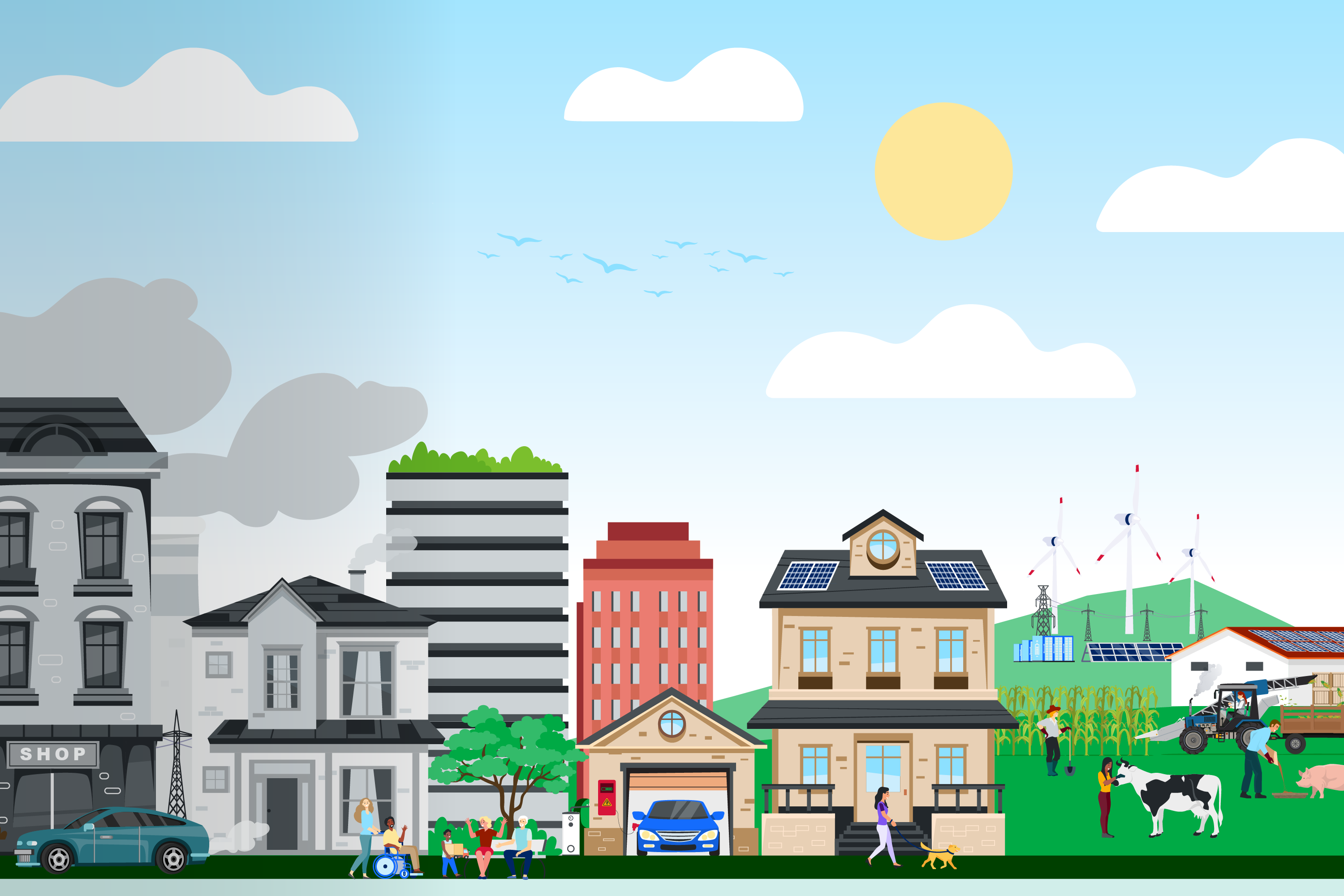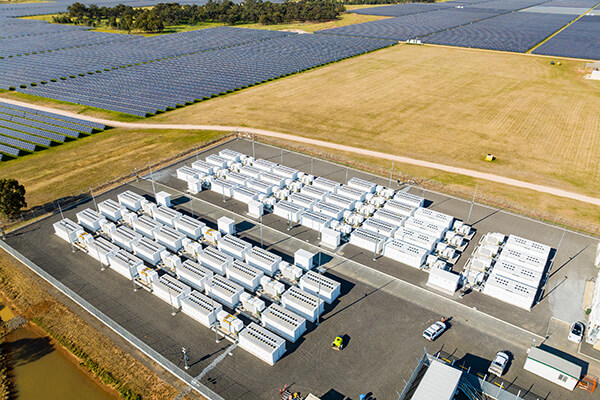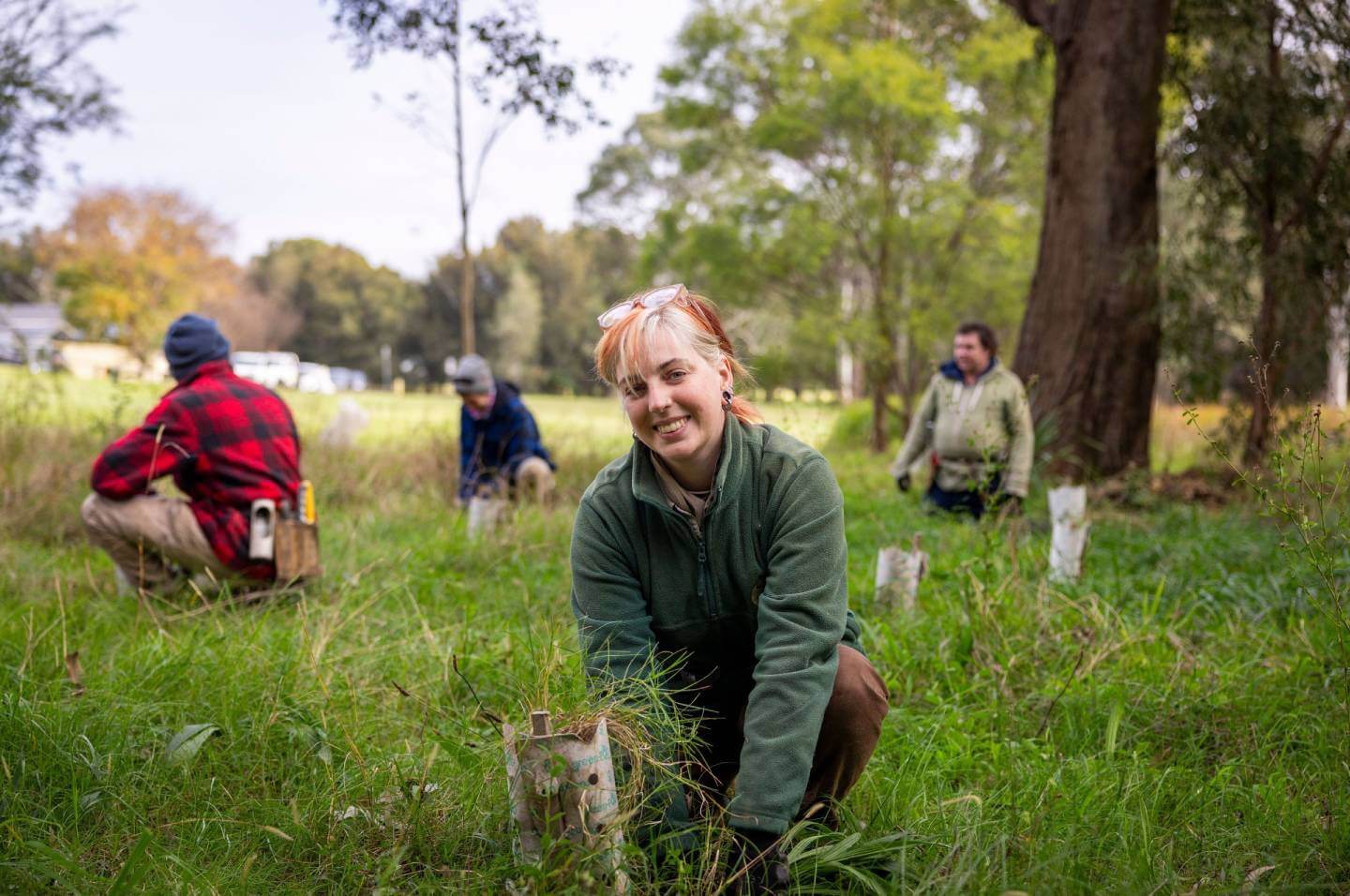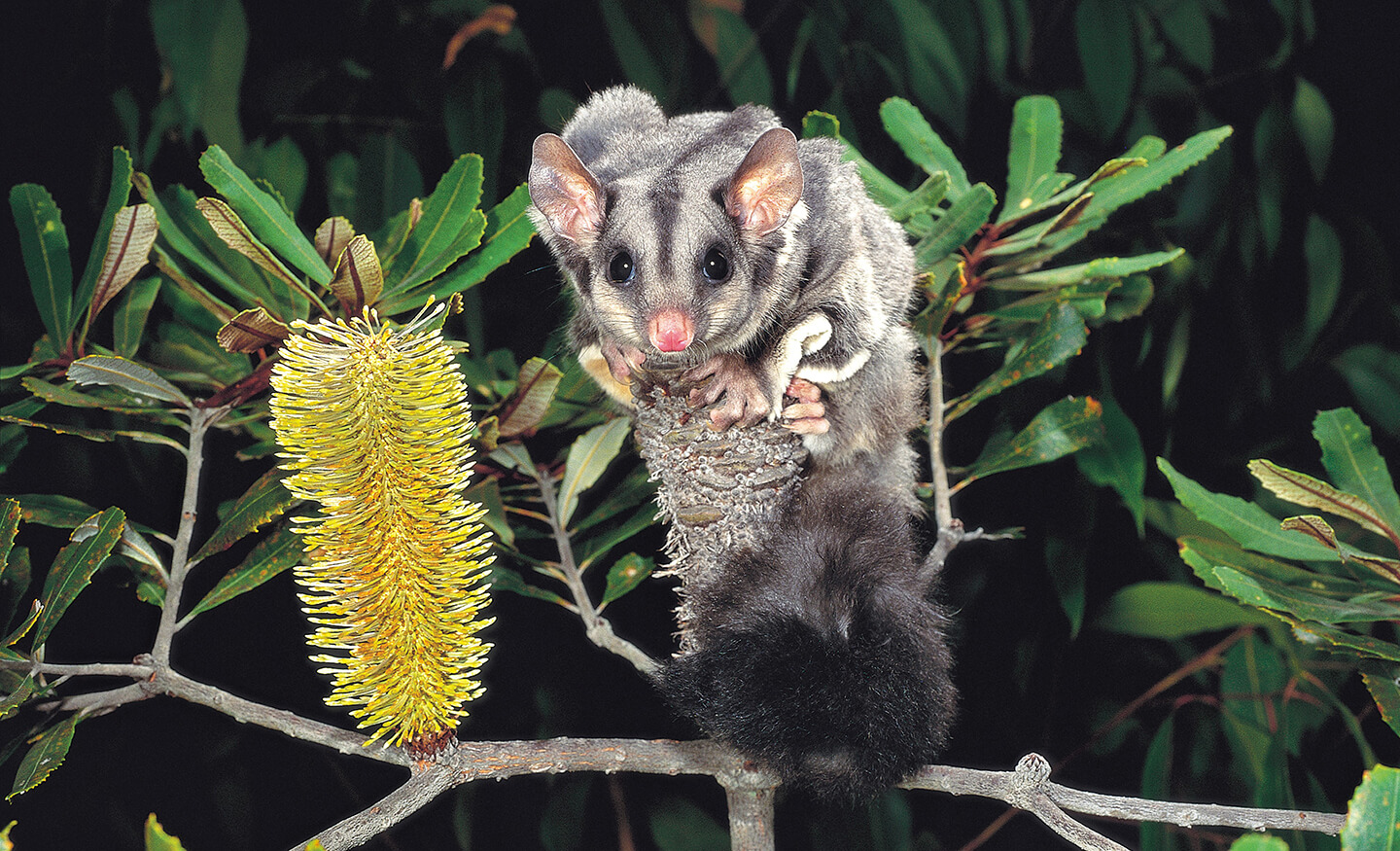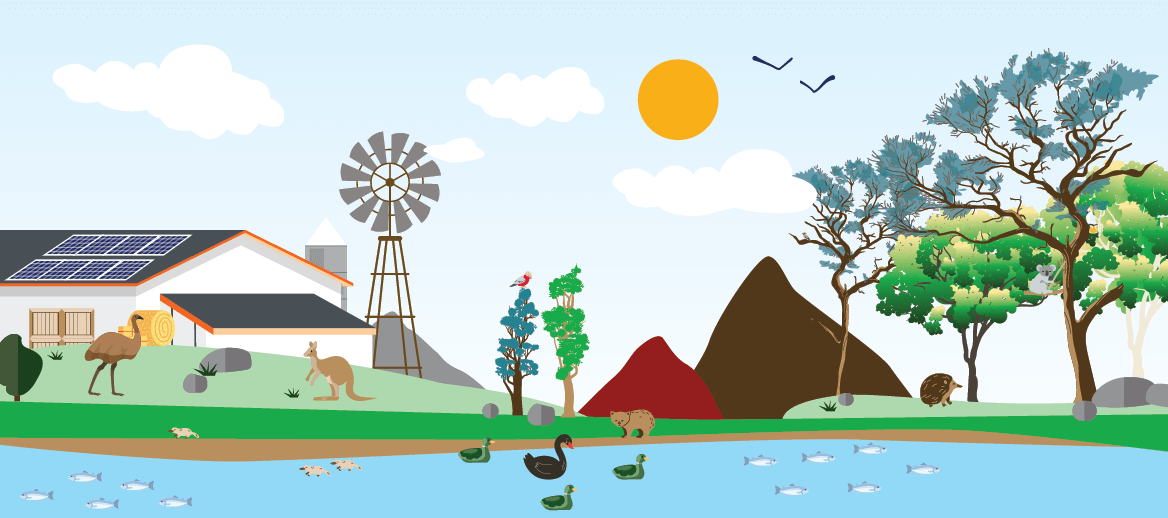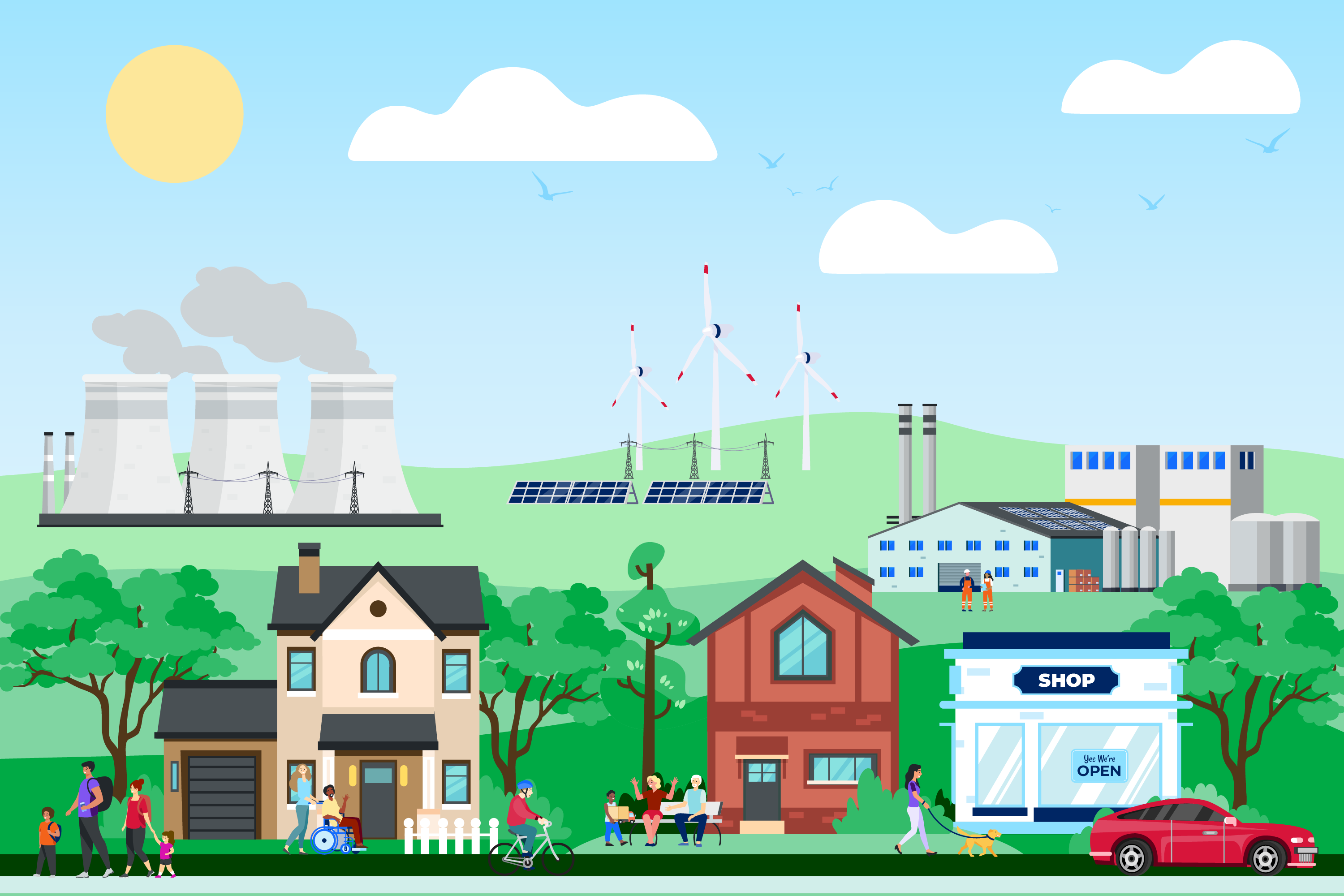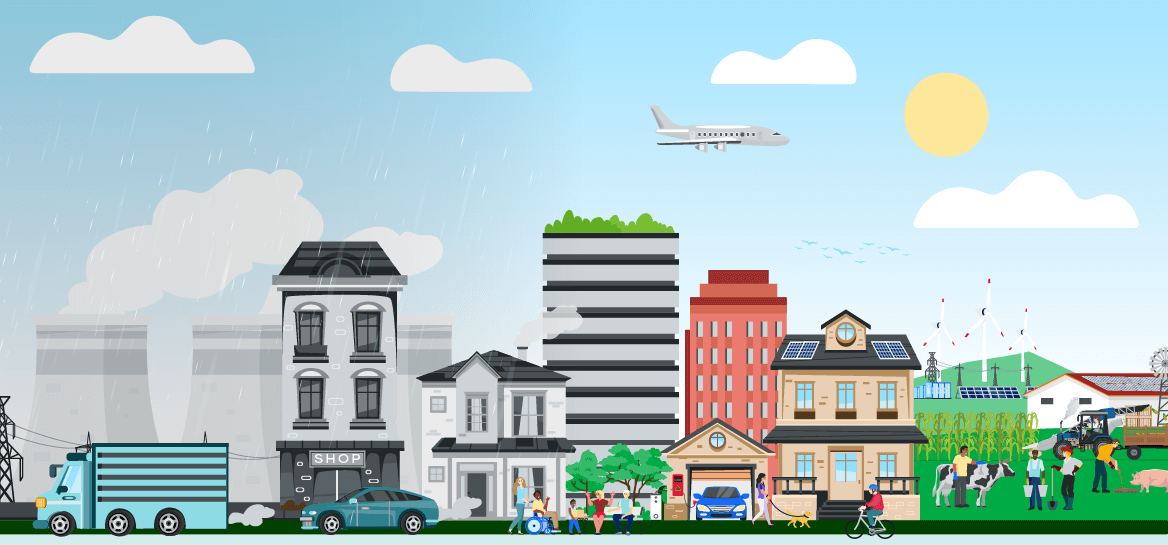Net zero explained
Net zero doesn't mean zero
Net zero means avoiding emissions from activities like burning fossil fuels by investing in renewable energy. It also means balancing those emissions we can't avoid with positive actions like planting more trees. We need to reach the point where climate pollution going into the atmosphere is balanced by removal out of the atmosphere, meaning our impact is neutral or 'net zero'.
If we get it right, net zero means new jobs, reliable, affordable, clean energy, more comfortable homes, healthier living and green spaces.
Our net zero commitment
The NSW Government has set our emissions reduction targets in law through the Climate Change (Net Zero Future) Act 2023. Together with the Net Zero Plan, it provides the framework that will help us reach net zero by 2050.
This framework provides clear emissions reduction targets. Meeting these targets is both a challenge and an opportunity to set our state up for a safe and prosperous future.
That's why we're currently developing a new net zero plan to accelerate the pace to ensure we reach net zero. The new plan will outline ambitious climate action to ensure we achieve our 2030 and 2035 emissions reduction targets and reach net zero by 2050.
How we compare to the rest of the world
CO2e means carbon dioxide equivalent.
The net zero language
Net zero refers to the balance between the emissions produced and the emissions that can be removed from the atmosphere. Zero emissions means producing no emissions at all.
Carbon neutral refers to the balance between carbon emissions produced and carbon emissions that can be removed from the atmosphere or offset. In comparison, net zero refers the balance of all greenhouse gases.
Both climate positive and carbon negative refer to removing more carbon dioxide from the atmosphere or storing more carbon than you emit. While net zero aims to stop the build-up of more emissions, climate positive (or carbon negative) aims to actively reduce the amount already in the atmosphere.
Carbon offsets are a financial investment by individuals or businesses to make up for the emissions they produce. They are generated by activities that avoid, reduce or remove emissions. Carbon sequestration is one example of these activities. Carbon sequestration is the storing of carbon in vegetation, soils and oceans, effectively locking the carbon away, out of the atmosphere.
Climate change mitigation means avoiding and reducing emissions of greenhouse gases into the atmosphere. Climate change adaptation means adapting to the impacts of climate change that we are already facing, such as reducing the impact of severe fires or floods.
Offsetting emissions - the other side of the net zero equation
The emissions we produce every day can be offset by removing gases already in the atmosphere. We remove emissions from the atmosphere by storing them under the ground, the sea or in nature. We’re also looking at new technologies that can remove emissions, such as concrete that stores carbon in building materials.
We can't turn back time, but by reaching net zero we can limit further impacts of climate change.
Read how we're helping farmers and primary producers benefit from carbon projects through enhanced biodiversity, increased productivity, increased community resilience and Aboriginal cultural co-benefits.
Read how we’re creating opportunities to heal Country through carbon farming, helping protect cultural heritage and providing economic opportunities.
Read how we’re working towards our net zero goals while restoring coastal and marine biodiversity and ecosystems as part of the NSW Blue Carbon Strategy 2022-2027.
Read how NSW national parks protect carbon stocks and create opportunities for carbon sequestration while they halt and reverse biodiversity loss and protect ecosystems.
Biodiversity plays a key role in balancing atmospheric gases such as carbon. The NSW Biodiversity Conservation Trust partners with landholders to connect, protect and enhance biodiversity across NSW.
See how Saving our Species is using science and research to secure the future of threatened species.
We all play a part in reducing emissions and with your help, we’re one step closer to reach net zero goals by 2050.
By understanding where greenhouse gases come from and which emissions we produce on a daily basis, you can take action and make the decisions that will determine the way we live now and in the future.
